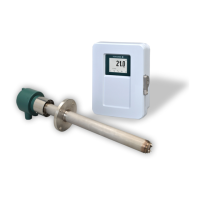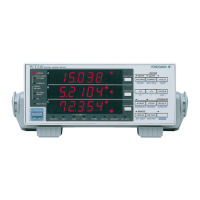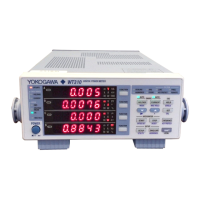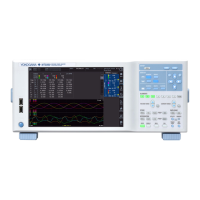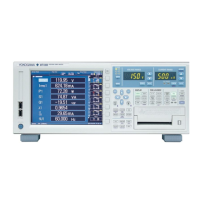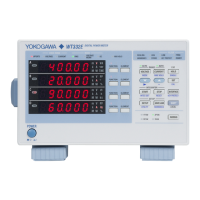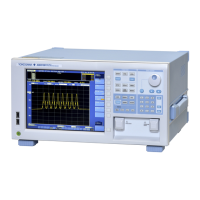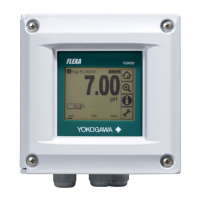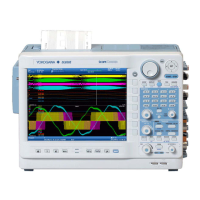<10. Other Functions>
10-3
IM 11M12A01-04E 11th Edition : Jul. 19, 2017-00
The water vapor pressure in the moist air can be obtained from the gas pressure and volume
ratio (= pressure ratio), as given below.
e = P x H
where, e = Water vapor pressure in moist air
P = Gas pressure
H = Humidity (volume ratio)
Use the above equation to nd the water vapor in the moist air, and use the theoretical equation
(JIS Z 8806) to obtain the temperature at which that water vapor is equal to the saturated water
vapor pressure.
10.1.6 Air Ratio
“Air ratio” is dened as the ratio of (the amount of air theoretically required to completely burn all
the fuel) to (the amount of air actually supplied).
For this equipment, the air ratio will be obtained in a simplied way by measuring the oxygen
concentration in the exhaust gas. The air ratio may be expressed mathematically by:
m =
x 21
(21- oxygen concentration)
1
If you use the air ratio data for estimating the combustion efciency, etc., check that no air is
leaking in beforehand and that the measured value has not been affected by any interference
gas (CH
4
, CO, H
2
, etc.).
10.1.7 Cell Temperature
This indicates the cell (sensor) temperature, usually indicating 750°C., obtainable from the
thermoelectromotive force and cold junction temperature described below.
10.1.8 Process Gas Temperature
A process gas temperature set with parameter code F13 is displayed.
10.1.9 C. J. Temperature
This is the internal (where the electronics is installed) temperature of equipment, which
compensates for the cold junction temperature for a thermocouple measuring the cell
temperature. If this temperature exceeds 85°C, the electronics may fail. When the ZR202G is
used, the maximum C. J. temperature will be 150°C. If the internal temperature exceeds this,
take measures to reduce the temperature such as by not exposing the equipment to radiation.
10.1.10 Amount of Water Vapor in Exhaust Gas
Calculate the water vapor in the combusted exhaust gas using parameters set in Section 8.6.3,
“Setting Fuels.” Use the following equation for calculation:
Moisture (water vapor) = (amount of water vapor per unit quantity of fuel) +
(moisture in air) }/total amount of exhaust gas
=
X + Ao x m
Gw + 1.61 x Z x Ao x m
where,
Gw = Amount of water vapor in exhaust gas, m
3
/kg (or m
3
/m
3
)
Z = Atmospheric absolute humidity, kg/kg
Ao = Theoretical air amount, m
3
/kg (or m
3
/m
3
)
m = Air ratio
X = Fuel coefcient, Nm
3
/kg or m
3
/m
3
For details on parameters, see Section 8.6.3, “Setting Fuels,” earlier in this manual.
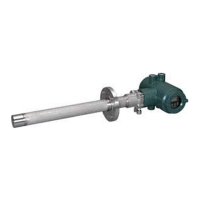
